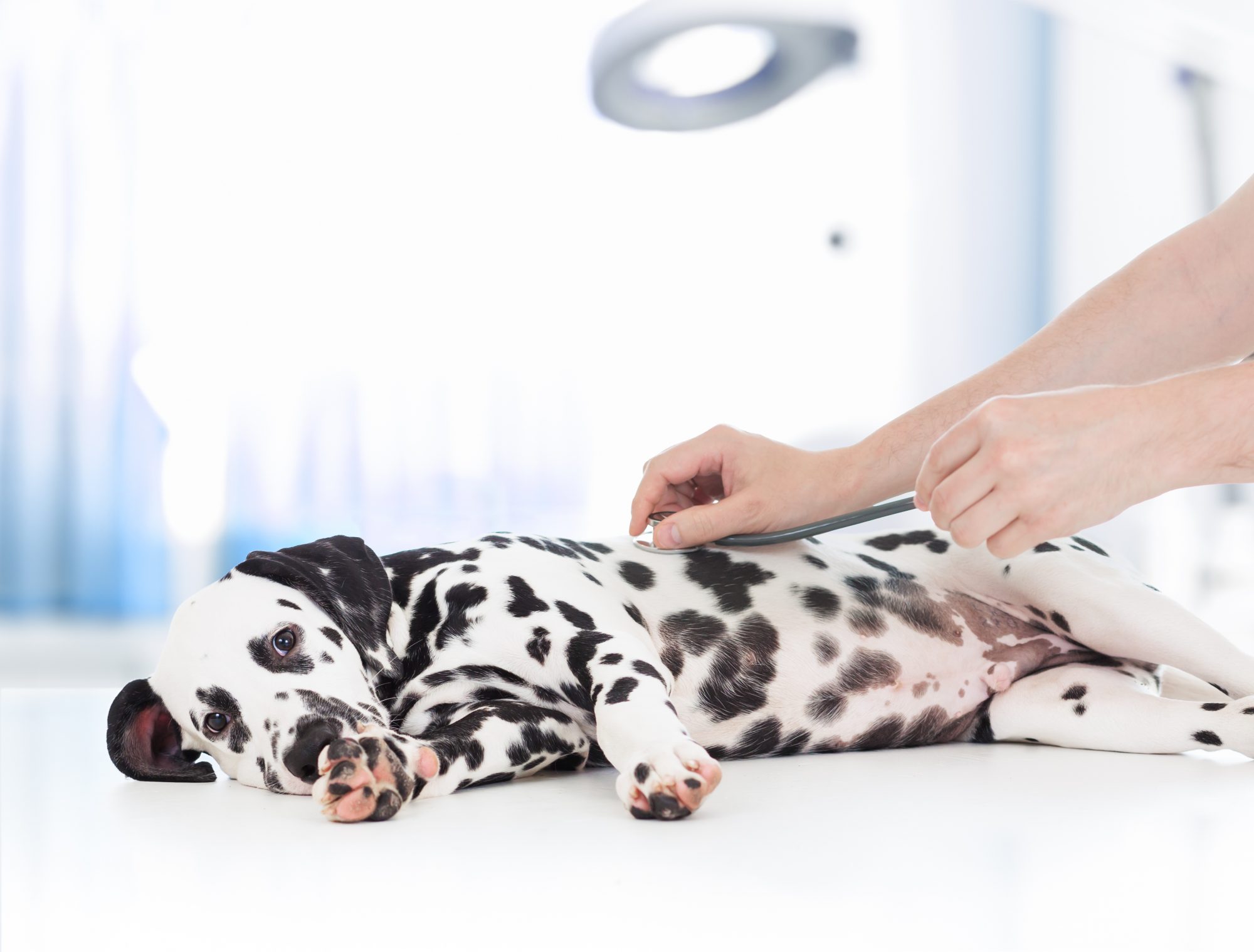Is It A Pet Emergency?

by MANDI BROADBENT, CSR
It’s 8:00pm on a Thursday and your dog or cat is starting to act strange. You’re worried that there may be something wrong and you’ve Googled your pet’s symptoms on your smartphone and have read some concerning things. But it’s late, and your vet’s office is closed for the night. Is it really worth it to take your pet to the animal emergency room right now, or do you risk it and wait until your veterinarian is open tomorrow morning?
Can your pet wait that long? Is it a pet emergency?
All these questions race through a pet owner’s mind when their four-legged friend starts to display odd behaviors or sudden signs of possible illness or injury. Some emergency situations are obvious – hit by a car, large laceration, choking on a bone – and require prompt medical attention.
However, it often happens that pet owners will rush to bring their pet in to the emergency center for something that isn’t necessarily an emergency – one or two episodes of diarrhea in the house, occasional vomiting, “emergency” or last minute health certificates, itchy skin for several days, licking paws – and can be upset to learn that the steep emergency fee could have been avoided if they had waited for their regular veterinarian’s office hours.
Signs to watch out for and help determine “Is it a pet emergency?” can include:
- Pale or white gums, blue tongue
- Coughing pink foamy/frothy liquid
- Rapid or shallow breathing
- Rapid or shallow pulse
- Noticeable change in body temperature
- Difficulty standing, inability to stay standing
- Apparent paralysis or inability to move
- Vocalizing in pain
- Loss of consciousness
- Seizure(s) or tremors
- Excessive bleeding/bleeding for more than 5 minutes (from wound, mouth, nose, or rectum)
- Inability to hold down food or water
- Any trauma
- Abnormal vaginal discharge
- Noticeably bloated and/or distended abdomen
- Bulging/ painful eyeballs
- ANYTHING that makes you worried
But… What Do You Do?
Find a 24 hour veterinarian in your area.
It’s a good idea to talk with your veterinarian at the time of your pet’s annual to find out if your pet’s hospital has any specific emergency protocol. Many vet hospitals will list their local or affiliated emergency centers on their website for quick access, and you can usually find that information on your vet’s after-hours phone message as well.
You’ve now determined that your pet is having an emergency, and you’ve found an emergency vet hospital… now what?
Pets who are seriously, or obviously, injured are in pain and panicking and may act aggressively towards their owners unknowingly. You should take precautions when handling an injured pet:
DOGS: approach your dog slowly. Very gently, and very calmly kneel down or get on the floor at their level. Call your pet’s name. If they show anger, aggression, or fear, call for help. However, it they are receptive, gently talk to them to keep them calm. Then, depending on the nature of the injury, fashion a makeshift stretcher using a towel or blanket and gently lift them onto it. Make sure you support their head, neck, and back in case they have suffered a spinal injury.
CATS: very carefully and gently, place a towel or a blanket over the cat’s head and face to help prevent biting. Then, slowly lift the cat and place them in an open topped carrier or box. Again, take care to support the head, neck, and back if you suspect a possible spine injury.
Most of the time emergencies require immediate action and veterinary care, however taking a moment at home to make sure your pet is stable before transport can be quite important:
TRAUMA/WOUND: Try elevating and applying pressure to the wound. If possible, wrap the wounded area in a towel or t-shirt.
CHOKING: Carefully place your fingers in their mouth to see if you can manually remove the blockage.
If removing the blockage is unsuccessful, you can try performing a modified Heimlich maneuver by giving a sharp push to the chest, which should hopefully dislodge the object.
If your at-home attempts are unsuccessful, don’t waste any time – Get your pet to the ER immediately!
But what if you suspect your pet has eaten something poisonous?
Your veterinarian knows a lot of stuff, but which things are toxic to your pet might not be that easy. Between human medications, flora, fauna, and household chemicals, there are probably thousands of potentially toxic or poisonous substances that your pet could accidentally come in contact with, and all with varying concentrations. If you think your pet has gotten a hold of a toxic substance (plants, food, or chemicals) and possibly ingested it, call the ASPCA Animal Poison Control Center at (888) 426-4435 immediately and speak with one of their trained toxicologists. Expect a $65 charge for using the hotline, however if they recommend your pet be seen by a veterinarian, they will provide you with a case number so your vet office won’t have to charge you again for making that same call.
And finally, remember to keep calm.
Your pet can sense your anxiety and that will only fuel the chaos of an already stressful emergency situation. Take a deep breath, remain calm, and act with slow, deliberate movements so as not to startle your scared pet. Speak quietly and calmly to them, reassuring them that it’s ok as you transport them to the emergency center. We know that asking you to remain cool and collected in the face of something so very scary can be a tall order, but your pet will thank you in the end.

